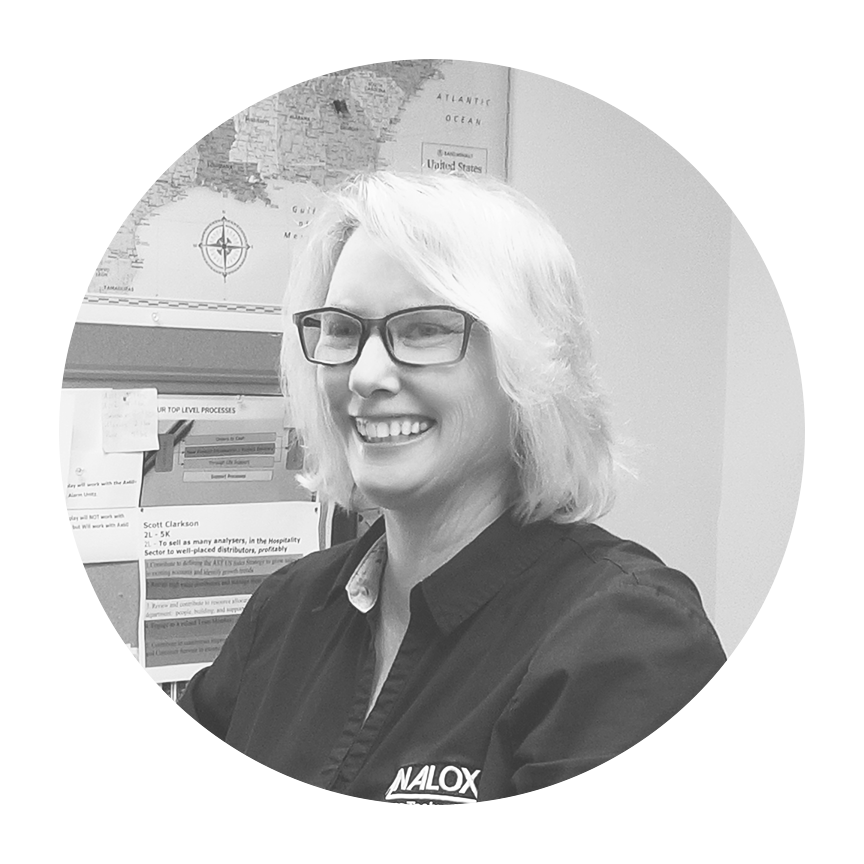GASWORLD – DEVICES TO KEEP YOU ICE AND SAFE
A Gasworld interview with Analox’s American President – Patti Clarkson.
To ensure safe handling of dry ice used in the transportation of coronavirus vaccines on flights around the US, safety monitors such as those from Analox have been increasingly deployed.
Analox Americas, which is based in Huntington Beach, California, has played its part to help ensure a smooth and safe roll out of the vaccine program across the US. Analox Americas President Patti Clarkson explained to gasworld how the company has helped keep Delta Airlines staff safe while transporting Covid vaccines – stored with dry ice – around the US.
CAN YOU EXPLAIN HOW ANALOX HAS HELPED OUT WITH THE VACCINE ROLL OUT IN NORTH AMERICA? ARE THERE ANY SPECIFIC CUSTOMERS LIKE DELTA YOU HAVE HELPED OUT?
Patti Clarkson (PC): We made steps to secure our supply chain, we implemented changes in our manufacturing so we could ramp up production and we have innovated our technology to solve current industry challenges such as measuring carbon dioxide (CO2) at altitude.
The gas industry has pivoted over the last 12 months and the entire community has adapted and come together on this mission critical journey and we should all be extremely proud. Analox have supported many customers in the vaccine roll out, from couriers, to pharmacies and medical institutions.
Specifically, we have worked closely with the team over at Delta Airlines. Their ramp crew are loading vaccines which have been super chilled with dry ice into commercial and shipping aircraft cargo holds. The cargo hold of any aircraft is a confined space and Delta sought to ensure their ramp crew’s safety. Delta wanted to make sure their team were fully protected from the risks associated with dry ice sublimation and all of their crew have now been supplied with an Analox CO2Buddy.
The CO2Buddy is a personal monitor which is worn on a belt or lanyard and will alarm if the CO2 levels become unsafe. Saving lives is at the heart of what we do and we want to ensure as many lives as possible are protected.
WHY WERE YOUR PRODUCTS NEEDED, AND HOW DO YOUR PRODUCTS FIT INTO THE DRY ICE SUPPLY CHAIN?
PC: As dry ice warms it begins to sublimate, a process where it turns from a solid, directly into a gas, bypassing the liquid state. This CO2 gas can be highly toxic to life and safety alarms ensure the people working in and around dry ice are protected from this danger.
Dry ice is now being handled by more people than ever before and some of these people are less familiar with the hazards, by utilizing CO2 safety monitoring we can reduce these risks. Our fixed and portable systems have many touch points throughout the supply chain, starting with the actual production of the CO2, in laboratories, logistics such as road and air cargo, distribution centers and warehouses, hospitals and vaccine centers.
HAVE YOU SEEN INCREASED DEMAND FOR YOUR DRY ICE PRODUCTS RELATED TO THE VACCINE AND THE TREND FOR FOOD HOME DELIVERY/TAKEAWAY?
PC: Absolutely, in terms of the vaccine roll out we’ve seen a rise in the demand across many applications but in particular, CO2 monitoring at altitude from the commercial flight operators. We already had a product called the Sub Aspida which can accurately monitor CO2 and O2 in pressurized environments, it was originally designed for use onboard submarines. We have developed this product and extended the pressure range so it can now operate at 700 to 1200 mbara.
The FAA (Federal Aviation Administration) issued a safety alert for operators in October 2020, this recommended (extract):
CO2 sensors installed or carried in the aircraft or worn by the pilots and other crew members will assist the operator and crew in recognizing hazardous concentrations of CO2 and implementing effective risk controls.
Pilot training on specific conditions and procedures can improve pilot decision-making in the event of a CO2 detector alert or other system abnormalities.
In a pressurized environment, you cannot simply use a standard sensor, the altitude will affect the readings giving inaccurate results. It is critical in this application that pressure compensated sensing is used, which is where our Sub Aspida thrives.
In terms of the food and beverage industry, we have worked shoulder to shoulder with them since the company began almost 40 years ago. We have seen the industry grow and develop in many ways over this time but in the last 12 months the most significant change has come from the food home delivery sector.
In the US, online grocery sales grew by 53% in 2020 and this is forecast to continue to grow, with the market estimated to be worth around $129bn by 2023. Restaurants and fast food chains have also adapted to the home delivery demand, statistics show around 60% of Americans are ordering a take out from their favourite food haunts once a week.
PFIZER JUST ANNOUNCED THAT THEY WERE SEEKING FDA APPROVAL TO SHIP AT REGULAR REFRIGERATION TEMPS. IF APPROVED, HOW MIGHT THIS IMPACT YOU?
PC: We think this is great news, it will offer much more flexibility for the pharmacies and vaccine distribution and supply chain. In terms of how this affects Analox, this may just switch our focus and product type. A lot of the refrigeration systems use liquid nitrogen (LN2) or R744 (CO2). Any inert gas like LN2, will deplete the oxygen levels should it leak. We can offer a range of different fixed (Ax60+) and portable (Aspida) oxygen monitoring systems.
If R744 is used as the refrigerant gas, then it’s just the same product offering as for dry ice users. Dry ice will still be used at times dependent on the level of production. A lot of logistics companies have already invested in dry ice equipment so this will also be a factor.

